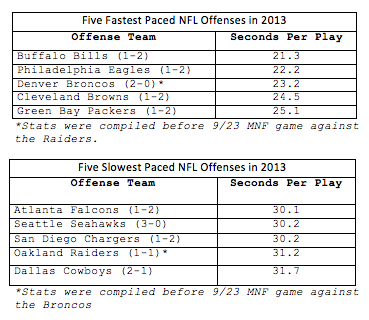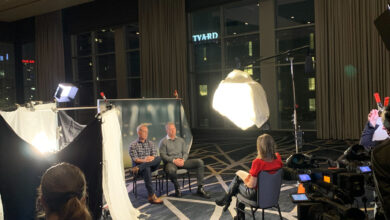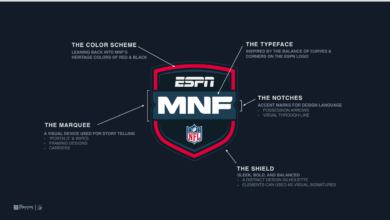Up-tempo NFL play leads to up-tempo telecasts and new challenges for MNF producer Jay Rothman

The NFL continues to get more and more fast-paced. No-huddle, up-tempo offenses are quickly becoming the norm.
Factor in the early success of the high-powered spread offense that Chip Kelly has brought from the University of Oregon to the Philadelphia Eagles, and this trend seems sure to continue.
Teams are getting to the line of scrimmage faster and running more plays. For fans, that potentially means more action, excitement and scoring. For the folks who televise the games, it means something else entirely.

According to ESPN Stats and Analysis, the NFL average is 27.5 seconds per play (through Week 3 leading into the Raiders-Broncos MNF game played Sept. 23). The 1-2 Buffalo Bills (21.3 seconds per play) and Kelly’s 1-2 Eagles (22.2) are currently the leagues “fastest” teams (see sidebar). Just a year ago, that league average was 28.3 seconds per play, and 10 years ago (2004 season) it was 29.0 seconds per play.
Up-tempo play means up-tempo telecasts and the challenges it presents for producers like longtime Monday Night Football Producer Jay Rothman are as varied as the plays. Front Row spoke with Rothman about the challenges.
How are the up-tempo offenses impacting you and the MNF production team?
Any team that doesn’t huddle, you have no idea if they’re going to snap now or if they are going to throw guys in motion, read defenses and snap. It’s unpredictable. Our rule of thumb is once they are over the ball at the line of scrimmage, you better be back on the game camera. You just don’t know. You have to be super disciplined and smart in terms of replays and keeping up with the live action, and you have to understand that the fan at home wants to watch the game live. You can’t impose your will. You have to go with the flow and not get frustrated by it.
It’s like an NBA game. You may cover a great LeBron James dunk but because there’s no stoppage in play, there may be six or seven more possessions before you can show a replay. LeBron’s dunk may be yesterday’s news when you finally get that stoppage.
What game situations are the most challenging?
When there’s a catch by a player down on the ground that the officials call a catch but it’s a challengeable play. Here comes the offense racing up to the line of scrimmage, and it’s a play that could determine the outcome of the game. We had that in the Sept. 16 Pittsburgh-Cincinnati game – a scenario we had actually rehearsed before the game in case the situation happened. Sure enough, it did.
There was a reception, and there was a question whether it was a fumble or not. The ball got punched out. Here comes [Steelers quarterback Ben] Roethlisberger racing to the line of scrimmage. We actually squeezed the replay in a two-box, where we had the live picture of them racing to the line of scrimmage and we showed two angles in the second box. Cincinnati challenged. It was ruled a catch on the field and overturned as a fumble, and Cincinnati got the ball back. Those are the types of things now that you have to be mindful of and how it will affect the game. We executed it perfectly in that game because we prepared for it.
How do you practice that kind of scenario?
In the truck before the game, we cue up a play like the one we had in Cincinnati in real time. We have the play with all the angles because we have the footage. We did it fast but we need to do it faster. The goal is to find the best look on the replay as quickly as we can, but not take too much time looking for that best look.
How was covering Chip Kelly’s first game with the Eagles in the MNF opener?
As much as even Jon Gruden studied Oregon film like crazy all summer long and how much time we all put into it, there was the unknown of what is he [Kelly] going to do. Could he pull it off? Mike Tirico’s enthusiasm was really cool, how he called the game because it was like, “I can’t believe this is going on.” The discovery of it all and hearing their reaction made it especially fun.
Has all this led to a significant change in your approach?
We still want to show off the toys and the technology, blow out our telestration systems, and present a real high-end presentation. At the end of the day, you have to be super disciplined. You have to take advantage of challenges, penalties and other stoppages of play. You just have to be very select at what and when you integrate; you have to be disciplined enough to know when things are going to fall to the floor, and that you have to move on.
Ultimately, this has helped us try to develop the mindset of spinning the commentary to be more proactive – to think about what’s going to happen, what should happen, and forecast, versus constantly going back. That makes much more compelling edge-of-the-seat TV than going backwards and saying what just happened, so we’ve tried to adopt this mindset.







